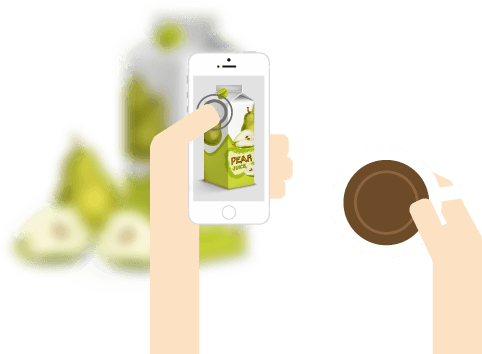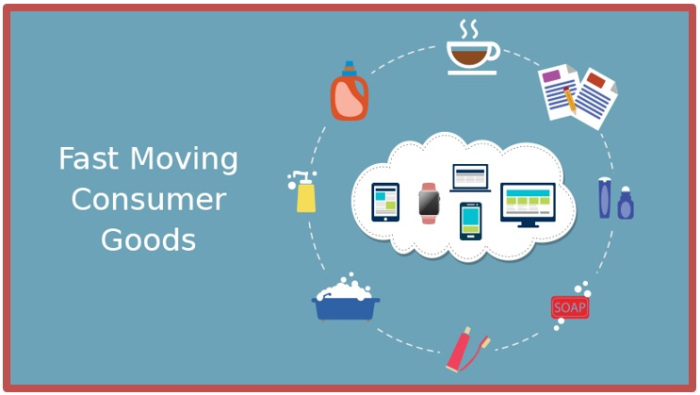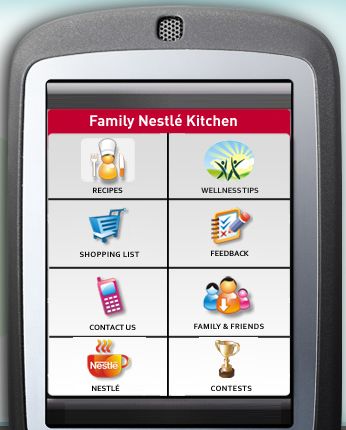3 Tips, To Boost FMCG Business! by FMCG Mobile Apps
Customers get delighted when you provide effective solutions that address their needs. Start focusing on solving customers’ needs through utility and entertainment based mobile apps. With fierce competition, you have to put extra efforts for brand recognition and recall. Using a mobile app, you can reach every customer with minimal investment and provide an effective value proposition. : moPharma

Boost your FMCG Business! by FMCG Mobile Apps
Create Instant Connect With Customers
Customers relate themselves to a specific mobile app development product or service providers through its brand image and value. Connect to your customers on a deeper level through a mobile app, android app and provide them a highly personalized experience. Mobile apps help you create customized shopping experiences for your buyers.
Increase Your Customer Reach
Build a shopping mobile app which allows a user to view rich product descriptions enhanced with high-quality images. While in the store, 52% of people use their smartphones to view a product description and 36 percent check the price of a product using their handset. Custom mobile apps also allow them to order & purchase a specific product from any store and even share the information with other users.
Reduce Cost and Increase Brand Recall
a mobile app development requires less investment as compared to other traditional marketing channels. Deliver extraordinary user experience and build high brand recall. Your mobile app can have a feature that help your users track the nearest location of your store. They can also invite friends with the help of social media integration.
People Buy Benefits
People don’t buy products, they buy the results that product will give. Start your process of identifying your ideal customer by making a list of all of the benefits that your customer will enjoy by using your product or service.
Clearly Define Your Customer
Who is the person who would most likely to buy your product and buy it immediately? Create an avatar of that customer.
Ask Specific Questions
How old are they?
Are they male or female?
Do they have children?
How much money do they make?
Do they have an education?
Identify the Problem Clearly
What kind of problem does your customer have that you can solve? If you have identified your customer correctly, these people will pay you to solve their problem.
Sometimes the problems are obvious and clear.
Sometimes the problems are not obvious, or unclear.
Sometimes the problems do not exist for the customer. If the problem does not exist, the customer will not buy your product.
Develop Your Competitive Advantage
You define your competitive advantage, the reason for buying your products or services, in terms of the benefits, results or outcomes that your customer will enjoy from purchasing your product or service that they would not fully enjoy from purchasing the product or service of your competitor.
Focus on the benefits of what makes your product better than others.
Use Content and Social Media Marketing to Your Advantage
There are so many more ways to get your product to your customers than ever before. What’s the best part? They’re all free. You can use social media such as Facebook, Twitter, and your blog to your advantage. By building relationships with your customers through these channels you can access more people than ever.
Some of the benefits of content marketing include:
More access to qualified leads.
More channels to sell your product.
Lower costs to acquire customers.
Here is a graphic of how quickly data is generated across the internet. Take a look at social media websites. Wouldn’t it be amazing to leverage this audience? You can!
Sometimes, You Will Have to Cold Call
Cold calling potential prospects can be frustrating and hard. Whether you are doing it in person or on the phone, it is your job to warm up a potential customer. Especially if your product is new, you may have to generate interest by calling your customers.
Try the 100 Calls Method When You Start Selling
This is a method I developed when I first began selling to overcome fears of being rejected. Reach out to 100 customers as fast as you can. You don’t really care about your sales results, only the number of people you contact. You will become fearless when selling your product. You can where I go into detail.
Pick the Right Price
Do market research on your competitors to determine the right price. If you have a high-priced product, be prepared to over-deliver quality to your customers. Price can be determined by “perceived value” of your product. If you can make your product seem superior to your competitors, you can charge a higher price.
Learn Proper Negotiation Techniques
Skilled negotiators are usually quite concerned about finding a solution or an arrangement that is satisfactory to both parties.
They look for what are called “win-win” situations, where both parties are happy with the results of the negotiation.
The Best Negotiators Have These 3 Qualities
They ask good questions to find out exactly what you need.
They are patient.
They are very well prepared.
Make Effective Presentations
In selling it is important to make a creative and compelling sales presentation to your customers. One of the many ways is to create an effective presentation by using PowerPoint.
Focus On Keeping Your Customer for Life
“Once a customer, always a customer.”
Once a customer has purchased your product, this should not be the end of your relationship with them. Focus on keeping a strong relationship with your customer. This will only create more trust and add value to your product.
Offer Potential Customers Something Really Great, for Free
Your ideal customer is far more likely to buy your product if you give them a preview to try out. Shoot a short video of your product in action, give them a free piece of really great content and get your customers excited for what’s next.
Give Your Customers the Inside Scoop
If you are going to have a sale on your product soon, tell your customers about it. They will be happy to hear about it, and it will build trust with them. They may even buy more because of it.
Your Sales Message Should Be Clear
Pick out one or two benefits of your products and state those clearly in the sales headline. Make it clear to your customers EXACTLY what your product is going to do for them. Be specific. If your product has multiple benefits, create sales messages for different customers that they can relate to.
Business Intelligence can help your fmcg organization
Organizations generate colossal amounts of data every day. However, only a handful of them are able to harvest useful information. Why only a handful, because these organizations follow a business intelligence strategy that harnesses knowledge. Enterprises and organizations that are able to integrate a business intelligence strategy have a competitive advantage. Such enterprises do not focus only on traditional reporting and/or analytics but on predictive analytics to deliver robust products and top-line. For today’s enterprises and organizations, hunches and experience, that mid and senior level management brought to the table, have been replaced with logical frameworks and business strategies.
If yours is a business that competes in the Fast-Moving Consumer Goods (FMCG) industry, you are facing a constant challenge of expanding portfolios, ensuring regulation compliance, reporting requirements, and managing a multifaceted supply chain that has distinct requirements. Unlike the other industries, the FMCG industry relies heavily on accurate and prompt market research, which can be used to run effective marketing campaigns. Along with these, any enterprise in this industry needs a well-organized distribution network coupled with an effective sales force to implement strategies and be intelligent enough to iterate quickly if targets are not met.
The competition in the FMCG industry today adds various components to consolidate their position in the market, create new sales channels and growth opportunities, while increasing the efficiency of their supply chain. To compete in such an environment, FMCG companies should leverage an authoritative grouping of business intelligence, technology and management to be able to compete and win market share.
What are the major changes in the FMCG industry?
The FMCG industry has evolved greatly. With the average income of working professionals increasing the craving that customers have towards global products has increased tremendously. Due to this appetite, the consumer is in a position to demand for not just global products but quality ones as well. It is safe to say that the industry has witnessed an explosion of products along with a diversification of markets as well. This phenomenon has increased: innovation, entry of new players, and process capabilities of industry players. Bottlenecks caused by external and internal issues have caused the industry in general to suffer. Therefore, to adapt to these blockages, enterprises have tried to adopt various tactics but to no avail.
How can FMCG companies address the issue?
Before we answer the question, let’s understand how the industry in general works. The FMCG industry has two sources of revenue:
Primary Sales: the sales that comes by selling goods to stockists and retailers
Secondary Sales: the sales the distributor/retailer makes by selling the same goods to the consumers/end-users.
While the primary revenue is what comes on the balance sheet of FMCG companies, the secondary revenue is the sales of all the retailers and distributors, which is the accurate view of the product performance. This will be a crucial aspect that FMCG companies need to track.
The focus is to ensure that existing products are made available to every consumer of the target segment and are consumed well – leading to higher sales. This will ensure that the secondary sales figures are higher, creating a pull for primary sales.
How can FMCG companies achieve this?
By increasing sales through effective marketing strategies
By improving operational efficiencies
Now that we know what to address, there comes a problem of gathering information. Business intelligence solves this specific problem for enterprises.
What does a Business Intelligence Strategy solve for Your enterprise?
It helps in increasing top line revenue and saving costs at the same time by:
Determining the ROI for your marketing strategy.
Ensuring you spend the right amount at the right place at the right time.
Identifying lost opportunities.
Identifying new segments to target.
Optimizing spend, based on the BCG Matrix.
Providing insights on determining the best promotional strategies which yield maximum results.
Bettering your marketing and sales strategies.
Increasing sales by improving operational efficiencies by driving better OTIF and MSL compliance.
Identifying the ROI on the shelf expenditure for each individual retailer.
Improved sales forecasting.
Understanding your market share and competitor performances better.
Helping you analyze the performance of new product launches relative to other compete products.
Part of the BI strategy involves improving operational efficiencies. This is done primarily across field sales teams and supply chain teams by measuring the following parameters.
Must Stock List: Based on the marketing campaigns and the forecasted sales, it is crucial to keep your stockpiles updated, as end-consumers, at the retail point, might choose your competitor’s product due to non-availability.
One critical aspect to increase sales is product availability at the outlets and making sure that these outlets have the required stock and are displaying your products. Based on the promotions being run and previous sales, field sales teams would try to ensure that the products that are being promoted or are in high-demand, based on sales history, are present at all the retail outlets. Effectively, these teams make sure that no opportunity is lost for the company. Ensuring this increases secondary sales and helps in creating an upstream demand and increasing the primary sales of the company.
On Time in Full: ‘Every order received needs to be serviced on time and in full (OTIF),’ is common knowledge across FMCG companies and distributors. Companies try to master it but due to various bottlenecks, such as stock not being available at the warehouses, trucks not being available, truck loading efficiency, etc. orders cannot be fulfilled in time and in full.
This also creates differences of opinion with the retailers for non-availability of products – impacting secondary sales and forcing them to look for alternatives to service end-consumers. This directly affects the primary sales and also benefits your competitors.
Artificial intelligence helps in improving OTIF loss by looking at the regions, products or reasons causing these inefficiencies. The sales and supply chain teams can work to fix these inefficiencies so that none of these opportunities are lost and increasing the primary sales revenues. With BI, you can forecast OTIF losses based on the sales forecast, actual secondary sales, and production capabilities. You can determine how to avoid these losses either by increasing production, decreasing marketing budget or improving your supply chain.
An ideal business intelligence system should include
A ready to deploy data model
Dashboards
Chatbots for sales, supply chain, and marketing teams
Having these will help teams across your organization access critical information with ease. Information would be available at their fingertips – therefore more time can be spent in strategizing ways to improve your company’s top line. A self-service BI helps teams take decisions based on the insights without having to depend of developers or MIS teams. BI systems can even send out alerts if KPIs go above and beyond a threshold. Dashboards in the BI system helps keep track of all the stockpiles for various retailers and distributors.
What do you think about the blog post? Was it helpful? Share your thoughts and suggestions by commenting below.
If you are looking to build your next (or first) mobile app and need help with one or more of these steps, you’re in luck! The moPharma Group welcomes app owners at any stage in this process. Whether you are a startup or Fortune 50 company, we have the team and knowledge needed to deliver a fantastic mobile app. Please don’t hesitate to write us today.





Discuss about post